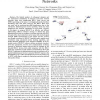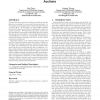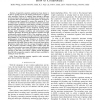35 search results - page 7 / 7 » Learning Interference Strategies in Cognitive ARQ Networks |
INFOCOM
2006
IEEE
13 years 11 months ago
2006
IEEE
— The limited number of orthogonal channels and the autonomous installations of hotspots and home wireless networks often leave neighboring 802.11 basic service sets (BSS’s) op...
ATAL
2005
Springer
13 years 10 months ago
2005
Springer
Many multi-agent systems consist of a complex network of autonomous yet interdependent agents. Examples of such networked multi-agent systems include supply chains and sensor netw...
WMTE
2005
IEEE
13 years 10 months ago
2005
IEEE
: There is an ever growing number of mobile learning applications based on location-awareness, However, there is still a lack of information concerning how it might impact socio-co...
MOBIHOC
2010
ACM
13 years 2 months ago
2010
ACM
Dynamic spectrum auction is an effective solution to provide spectrum on-demand to many small wireless networks. As the number of participants grows, bidder collusion becomes a se...
TCOM
2010
13 years 3 months ago
2010
—Cooperative spectrum sensing has been shown to be able to greatly improve the sensing performance in cognitive radio networks. However, if cognitive users belong to different se...



